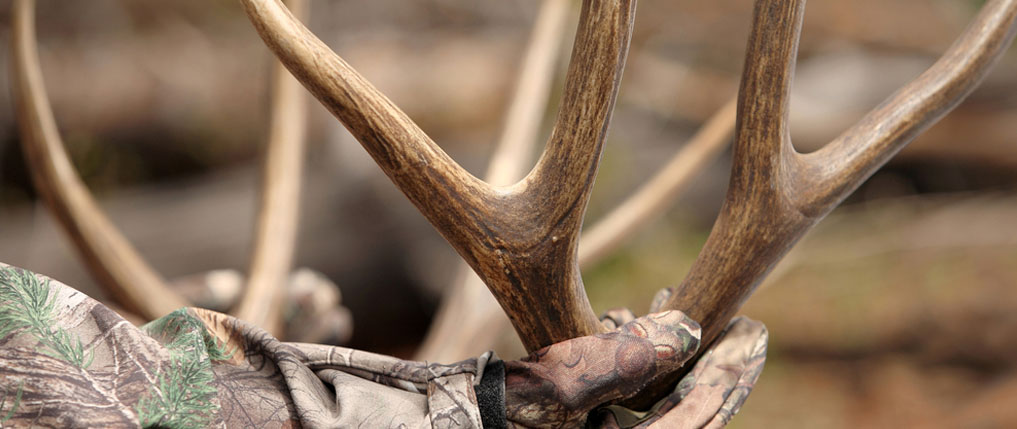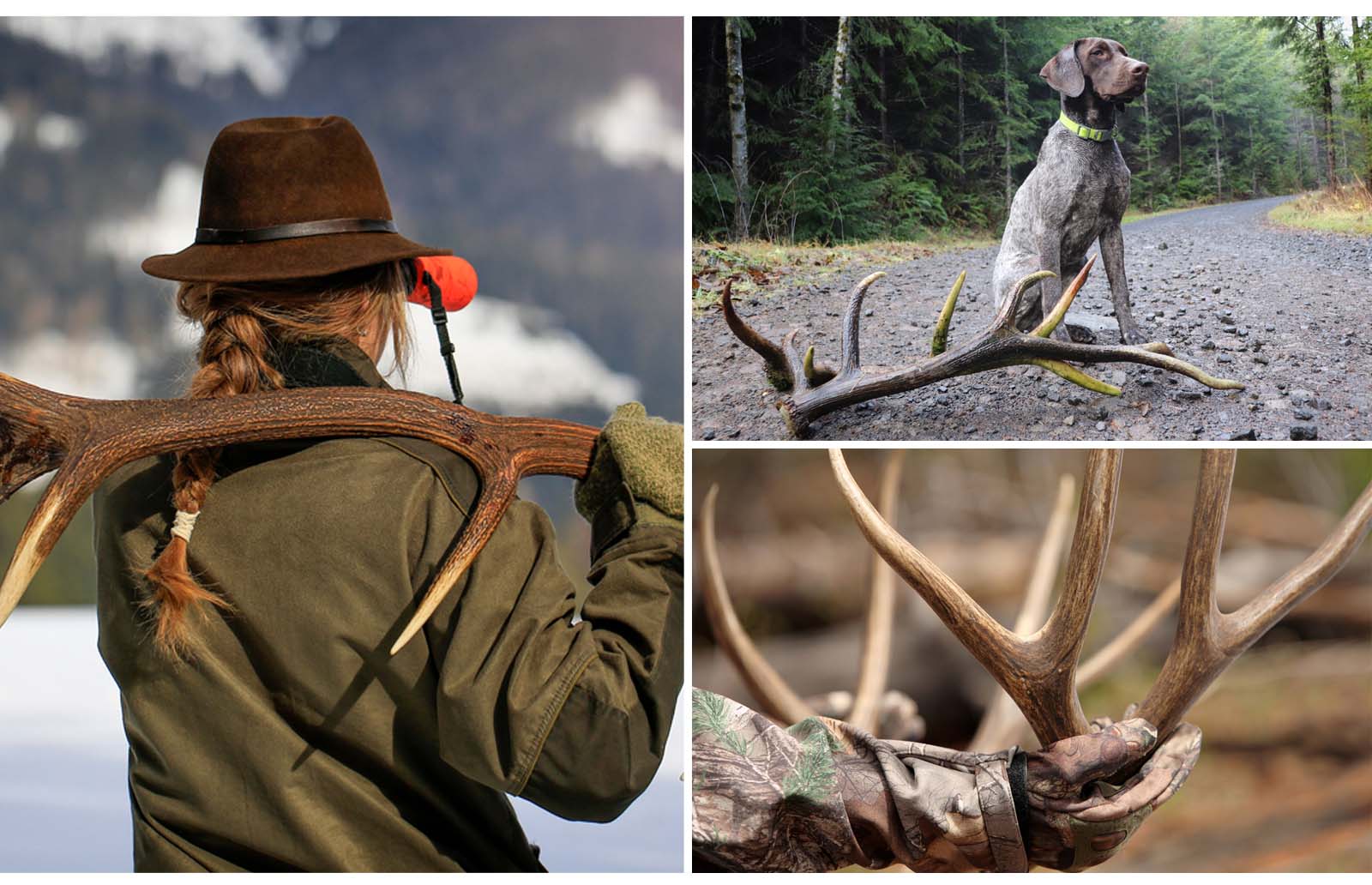Shed Hunting 101
November 13, 2020

As deer and other proudly crowned animals drop their antlers after a rut, it offers a new activity for hunters called “shed hunting.” And besides looking nice hung decoratively on a wall or as a nutritional chew toy for your pup, shed hunting has many advantages. It allows hunters to take inventory of nearby bucks and become familiar with the deer’s habitats, tracking their whereabouts. Deer hunter or not, this wonderful activity also gives an excuse to get outdoors after a long winter.
Interested in trying shed hunting? Here are some essential tips and must-have gear for a successful and ethical shed hunting adventure.
Tips for Your First Shed Hunting Adventure
Shed hunting requires lots of footwork. Hiking through the woods or across plains, you’ll spot some “white gold” anywhere deer, elk or even moose pass through. So keep your eyes peeled and use these tips.
Common Shed Hunting Seasons
Your basic mule deer and white-tailed deer can shed from late December into May, while elk shed during the March-ish time frame. Moose shed their “paddles” around December and March. However, ethical shed hunting asks that you don’t push these animals away from their already-minimal food and water sources too soon into the season.
Where to Find Shed Antlers
As winter approaches, deer seek warmer shelters such as cedar thickets, protective slopes and tree clusters. However, they still move around throughout the day between their bedding to food and water sources, so you’ll have to stay on your toes. Also, scan areas around fences where deer jump, often dislodging antlers.
Aim for Deer’s Food and Water Sources
When not sleeping, deer are focused on food and water sources to stay nourished through the winter. Follow the travel corridors from their shelter to fields, which often provide them grain and other foods. In winter, deer seek out flowing water sources like rivers and creeks that don’t freeze over. Keep distant so as not to disturb them and use binoculars to scan these areas.
Bring Your Dog
Bred for hunting or not, a loyal dog can lend its nose out for a day of shed hunting. Let them smell previously found sheds and help you track more down through scent. Shed Dog Trainer offers lots of amazing training resources and gives techniques to help you train your dog.
Must-Have Shed Hunting Gear and Equipment

Now that you understand some basic shed hunting tips and tricks, you’ll need the right gear and equipment.
- Proper Rugged Footwear – To cover good ground, you’ll need appropriate footwear. Consider Gore-Tex lined hiking boots that are both waterproof and breathable, but also supportive for all-day hikes. Combine your boots with moisture-wicking wool socks for a comfy walk through the woods searching for shed.
- Backpack – Daypacks can carry almost everything you need for a day of shed hunting. A backpack can bring the Ten Essentials like an LED flashlight or headlamp and things like snacks, optics and the shed itself. Make sure to choose a durable backpack that doesn’t catch on brush or thorns, preferably something made with a double-weave polyester fabric. A water-repellent coating is a must-have as well. Some hunters prefer a dry bag-style cooler backpack for wetter spring days and snowy winters. However, backpacks offer extra convenient features, such as lashes and zip ties.
- Binoculars – Binoculars with a clear focus and good magnification will come in handy to scan the grounds of far-off fields and meadows.
- Tech Gadgets – Install the onX Hunt app to discover private and public lands that permit shed hunting. The app reveals property boundaries, topographic maps and even how to seek permission to shed hunt on private land. This handy app can also be installed on a Garmin GPS unit and desktops as you research your shed hunting trip.
Shed Hunting Regulations, Laws and Ethics
It’s crucial to know shed hunting ethics and one of those rules is never to harass the animal. During harsh winters, deer heavily rely on their grounds’ food and water sources. While you’ll find sheds around these areas, it’s important not to interrupt and push them away from this territory too soon. Otherwise, they might be forced to locate new sources. Instead of eagerly rushing to find sheds, patiently wait until the worst of winter has come and gone.
Make sure you know your state's laws and regulations. In some places, shed hunting is illegal, while it’s allowed only during a specific timeframe or region in others. Call your state’s wildlife regulatory agency to get the details.

SIGN UP FOR EXCLUSIVE OFFERS
Sign up for our newsletter and get exclusive access to new product launches, special offers and much more.
RELATED BLOGS














